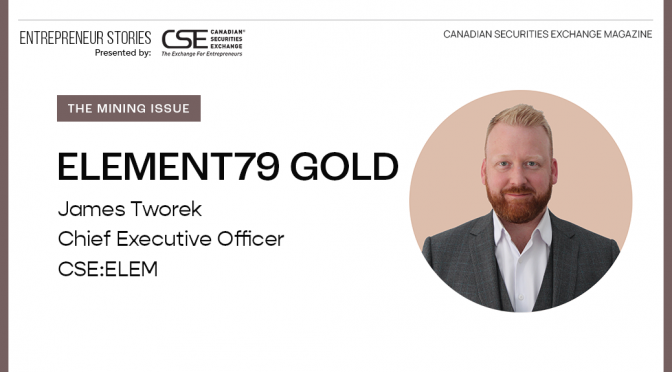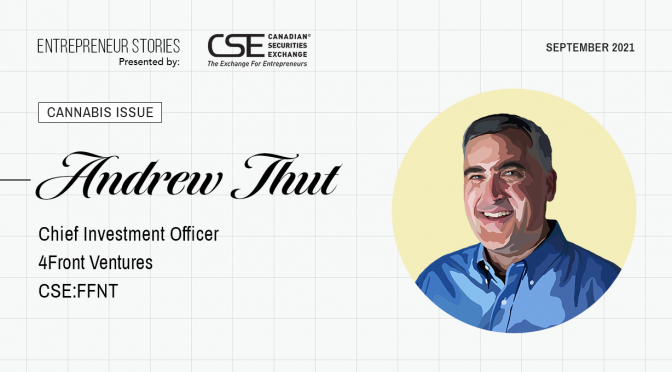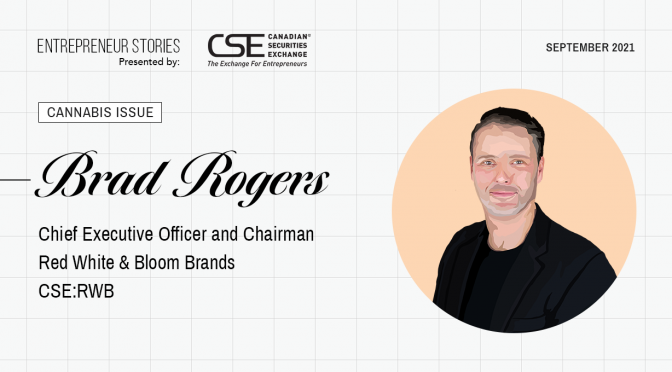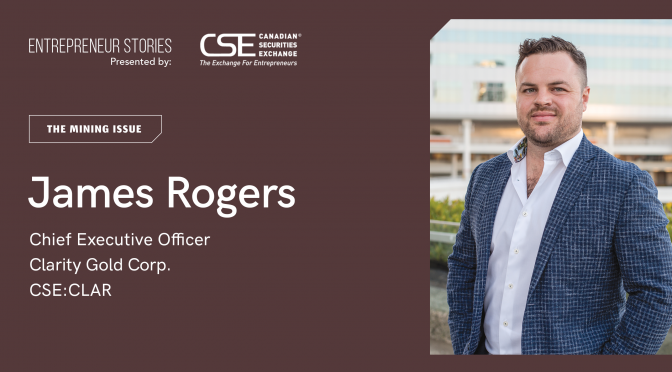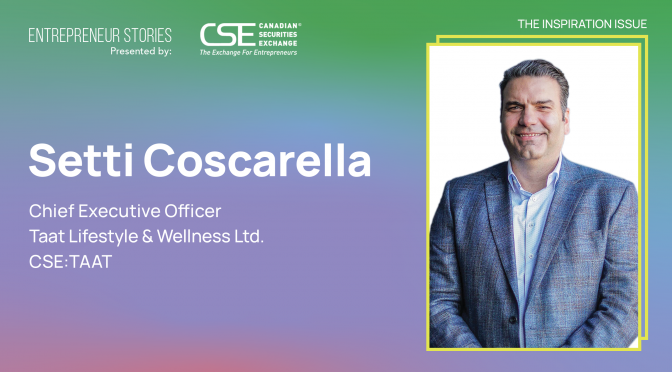Mineral exploration companies rarely talk about the potential for generating cash flow because it simply is not part of the vision. For Element79 Gold (CSE:ELEM), however, it is a key aspect of the path to success, and the company is currently putting the finishing touches on a portfolio designed to achieve it in the near term.
Element79’s flagship is the Maverick Springs Project in Nevada and it has a number of other properties along the state’s Battle Mountain trend as well. It also has projects in British Columbia and Ontario, and recently moved to acquire two high-grade Peruvian gold projects.
Upon completing the Peruvian acquisitions, Element79 Gold will have a diversified portfolio of assets including greenfield, advanced 43-101 inferred resource stage, and historic high-grade past-producing mines that have the potential to become producers again.
Canadian Securities Exchange Magazine sat down with Element79 Gold Chief Executive Officer James Tworek in late March to find out more.
Element79 recently completed a 43-101-compliant, pit-constrained mineral resource estimate for the Maverick Springs project in Nevada. What did it tell you?
It gave us an opportunity to gather all the data that had been amassed from previous owners of this property and to take the historical resource and bring it up to modern standards. In doing that, we were able to incorporate an additional 59 drill holes of data, which had been completed after the historical reports.
It also gave us the opportunity to refresh our perspective on the project. As it was previously conceived only as a prospective underground mine, arguably there was a lot that was being missed. By looking at it from the perspective of a pit-constrained model, we can now look at the strip ratio of all of the strata above the hard rock and begin to incorporate those economics.
Right now, the strip ratio is about 5:1, and going forward our plans include doing some infill drilling to prove up value and to enhance our understanding of the project’s metallurgy, with the intent of getting better yields from higher strata and enhancing overall project economics.
Aside from Maverick Springs, Element79 has a portfolio of 15 properties in Nevada which you are assessing for further exploration, potential sale or spin-out. Which is most likely?
Because it is such a diverse portfolio, we have stratified them into what we’ll call the “best hits” in terms of what we will likely keep ourselves and focus on to unlock value. I would argue that Element79’s market capitalization is very much weighted on the value provided by our 3.71 million ounces of gold equivalent and the potential of developing Maverick Springs. Little of the rest of the portfolio is being accounted for today.
Some of these are well-explored properties, with 160-plus drill holes on them, but they don’t have any form of modern report. So, this is a great opportunity for us to revisit data, put in some work on the properties and generate modern reports on them with the intent of unlocking the value of the resources onto our balance sheet.
In addition to raising capital for the projects, we have been speaking with potential partners that might want minority joint ventures on specific properties. We are looking at all these aspects, and now that we’ve reached our current strategic M&A plateau we’re confident in where we’re going with developing our portfolio.
Beyond Nevada, you are in the process of acquiring the Snowbird project in British Columbia and have an option on another project in the famous Timmins mining camp in Ontario. What can you tell us about these?
The Timmins project, called the Dale Property, has proximity to IAMGold’s Cote gold mine, where production is expected by mid-2023. Being on the same greenstone belt, about 60 kilometres away, there is a great opportunity to show there’s something worth pursuing.
That said, Dale is at a very early stage, so we have to balance that exploration requirement with developing our other more advanced projects at the same time.
With the Snowbird project, where we have already funded about 3,000 metres of drilling, we intend to close the purchase shortly. The catch to the transaction was that the exploration permit ended on December 31, 2021, and the vendors, Plutus Gold, had a contractual commitment to invest $1 million in exploration by June 30, 2022.
Exploration permits are currently taking six months or more to obtain, so having to wait for it could have jeopardized the acquisition in the immediate term. We’ve been told that Plutus is just getting assays trickling in, and a 43-101 report on the project is underway. We should have that information in the first part of the second quarter.
Element79 recently signed a Letter of Intent to acquire some past-producing gold mines in Peru. What do these offer?
We have an LOI signed and we’re going through a 90-day due diligence process prior to closing. These assets were previously producing but were shuttered due to low prices in the early 2000s. But there was prolific production out of them. The Lucero asset was producing in the range of 19 grams per ton gold equivalent.
The beauty of working in Peru is that mining is deeply rooted in the culture and it’s a cornerstone of the economy. Also, the permitting process is streamlined compared to many jurisdictions.
There are existing permits in place to extract 350 tons per day of ore. And with the Lucero asset, where the two permits are in place, there is regional infrastructure. The closest mill is only running at about 60% capacity and around 20 days a month, so there’s potential for us to start generating cash flow in the near term.
The company has said its portfolio offers a pathway to revenue. What do you think is the timeline?
Post-acquisition of the Peruvian portfolio, which should be closing at the latest by mid-June of this year, we plan to take the time to make sure that we have adequate basic exploration, including an initial 43-101 resource for both former mines to get them operating again. We feel quite confident that within 18 months we should be in production at Lucero.
That can help offset our day-to-day operating costs, and even fund some exploratory work. If we want to move by leaps and bounds, we are speaking to different financing parties, with debt financing a topic. With cash flow, we can justify borrowing to develop both the Peruvian assets as well as our flagship and Nevada portfolio that much faster.
What should investors in Element79 expect in the medium term?
We’re ratcheting up very quickly from a lean start-up to a fully functioning operational mining company on a global basis. We’ve just brought on another world-class teammate, Mr. Kim Kirkland as our VP of Global Exploration and are engaging further consultancies and country managers for specific assets.
The pending newsreel includes updates as we close on Snowbird and eventually on the Peruvian assets. We’re also actively raising capital, as well as progressing long-term sustainability initiatives while developing our portfolio.
Bringing on cash flow is a key driver of our corporate strategy. There are a lot of junior miners that aren’t able to achieve this goal based on their assets or strategy. We intend to be doing that within 18 months of acquiring the Peruvian portfolio.
My personal goal was to ensure that this company would have access to cash flow within 24 months of our IPO. We seem to be on that trajectory right now, with an amazing team of people and key assets to get us there.
This story was featured in the Canadian Securities Exchange magazine.
Learn more about Element79 Gold at https://www.element79.gold/.

